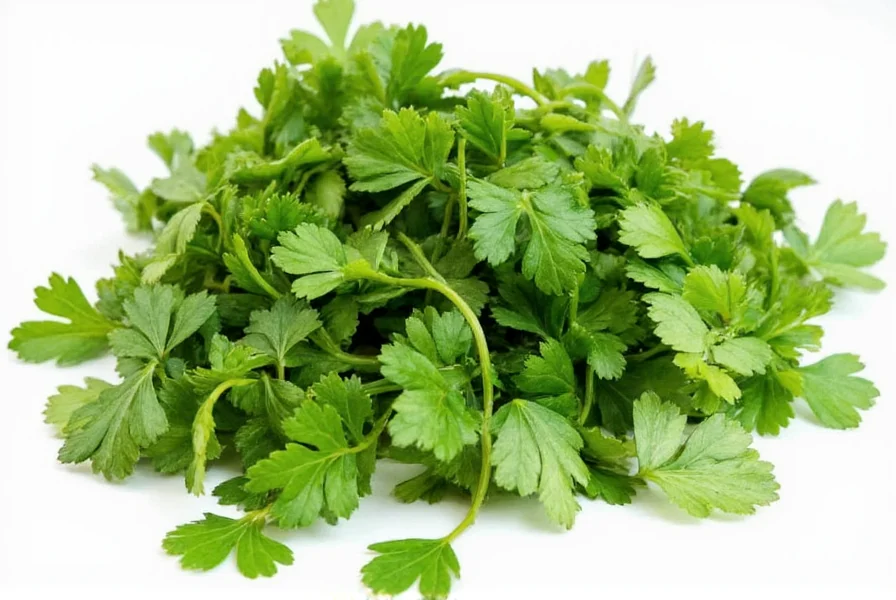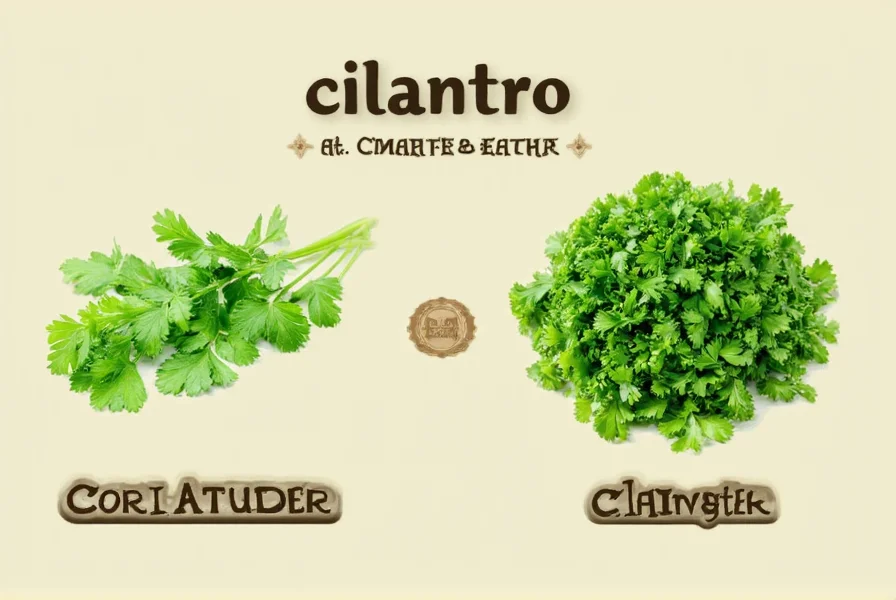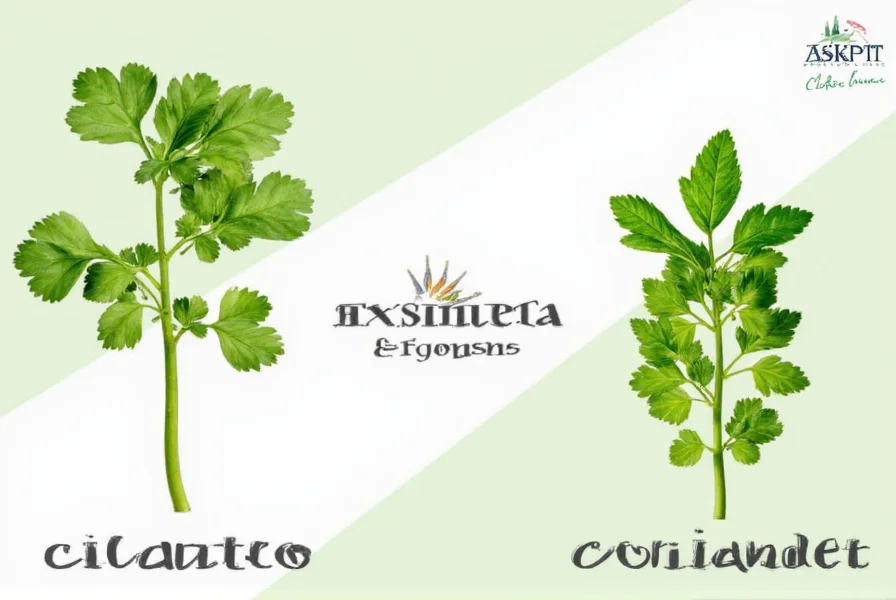Many home cooks face confusion when recipes call for "coriander" in some regions and "cilantro" in others. This culinary conundrum stems from regional naming differences for parts of the same plant. Let's clarify this common kitchen dilemma with practical substitution guidance that preserves your dish's intended flavor profile.
Understanding the Cilantro-Corinder Relationship
Botanically speaking, cilantro (Coriandrum sativum) and coriander refer to different components of the same plant. In American English, "cilantro" describes the fresh leaves and stems, while "coriander" refers to the dried seeds. Internationally, "coriander" often describes both the leaves and seeds, creating significant confusion for recipe followers.
The flavor profiles differ dramatically. Fresh cilantro delivers a bright, citrusy, sometimes soapy taste (for those with the OR6A2 gene variation), while ground coriander seeds provide warm, lemony, slightly spicy notes with hints of sage. This fundamental difference means they're not interchangeable in most recipes without careful consideration.
When Substitution Works (and When It Doesn't)
Attempting to substitute cilantro for coriander seeds (or vice versa) requires understanding your recipe's flavor architecture. Consider these substitution scenarios:
| Recipe Type | Substitution Possible? | Recommended Approach |
|---|---|---|
| Mexican salsas/guacamole | No | Use fresh cilantro only; coriander seeds won't replicate fresh herb flavor |
| Indian curries | Limited | Use 1 tsp ground coriander = 2 tbsp chopped cilantro (adds different flavor dimension) |
| Middle Eastern spice blends | No | Coriander seeds essential; cilantro provides wrong flavor profile |
| Fresh herb garnishes | No | Cilantro required; ground coriander creates bitter texture |
| Baked goods | Yes | 1 tsp ground coriander = 2-3 tbsp finely chopped cilantro (adjust liquid) |
Practical Substitution Guidelines
When you must substitute between these ingredients, follow these evidence-based recommendations:
Substituting Cilantro for Coriander Seeds
This works best in moist applications where fresh herb flavor complements the dish. Use this ratio: 2 tablespoons fresh cilantro = 1 teaspoon ground coriander. Remember that cilantro's flavor diminishes with cooking, so add it near the end of preparation. This substitution works reasonably well in:
- Chutneys and relishes
- Marinades for proteins
- Some baked goods (adjust liquid content)
- Fresh fruit salads
Substituting Coriander Seeds for Cilantro
This is more challenging since dried spices can't replicate fresh herb brightness. Use ground coriander at 1/4 to 1/2 teaspoon = 2 tablespoons fresh cilantro. This works acceptably in:
- Stews and braises (add early for flavor integration)
- Spice rubs for grilled meats
- Some salad dressings (emulsify properly)
- Bean dishes where fresh herbs would wilt
Better Alternatives When Substitution Isn't Ideal
Sometimes neither ingredient properly substitutes for the other. Consider these alternatives instead:
When You Need Cilantro But Only Have Coriander
- Parsley - Provides similar fresh green notes (use 1:1 ratio)
- Epazote - For Mexican dishes (use sparingly, 1 tsp = 2 tbsp cilantro)
- Arugula - Adds peppery note (blanch first for milder flavor)
When You Need Coriander But Only Have Cilantro
- Cumin + lemon zest - 1/2 tsp cumin + 1 tsp zest = 1 tsp coriander
- Fennel seeds - Toasted and ground (use 3/4 tsp = 1 tsp coriander)
- Caraway seeds - For earthier profile (use 2/3 tsp = 1 tsp coriander)
Preserving Flavor Integrity in Your Recipes
Professional chefs recommend these techniques when working with cilantro and coriander:
- Toast coriander seeds before grinding to enhance flavor complexity
- Add cilantro at the end of cooking to preserve volatile flavor compounds
- Freeze cilantro in oil to extend usability while maintaining flavor
- Grind coriander seeds fresh as needed (pre-ground loses potency quickly)

Regional Terminology Confusion Explained
The naming confusion stems from linguistic history. "Cilantro" comes from Spanish, while "coriander" derives from Greek via Latin. In most English-speaking countries outside North America, the leafy part is called "coriander leaves" while the seeds are "coriander" or "coriander seeds." American English adopted "cilantro" specifically for the leaves to distinguish them from the seeds.
When following international recipes, always check whether the recipe originates from a region that uses "coriander" for both components. Recipe context usually provides clues: if it specifies "fresh coriander," it means the leafy part; "ground coriander" or "coriander seeds" refers to the spice.

Common Substitution Mistakes to Avoid
Many home cooks make these critical errors when substituting between these ingredients:
- Using whole coriander seeds instead of fresh cilantro in salsas (creates unpleasant texture)
- Adding cilantro early in curry preparation (causes flavor degradation)
- Using dried cilantro as a substitute (loses 90% of flavor compounds)
- Ignoring regional recipe terminology differences
- Substituting equal volumes without accounting for flavor concentration differences
Practical Application: Recipe Adjustments
Consider these real-world substitution scenarios:
Mexican Pico de Gallo Without Cilantro
If your recipe requires cilantro but you only have coriander seeds, skip the substitution entirely. Instead, use equal parts flat-leaf parsley and fresh oregano with a squeeze of lime. The flavor profile won't be identical but will provide complementary freshness without the soapy notes some detect in cilantro.
Indian Curry Without Coriander Seeds
When your curry recipe calls for ground coriander but you only have fresh cilantro, use this approach: finely chop 3 tablespoons cilantro and blend with 1/4 teaspoon cumin, 1/8 teaspoon turmeric, and 1 teaspoon lemon juice. Add during the last 5 minutes of cooking to preserve flavor integrity.
Final Considerations for Successful Substitution
Successful ingredient substitution requires understanding both the chemical composition of flavors and the culinary context of your dish. Cilantro contains aldehydes that provide its distinctive flavor, while coriander seeds contain linalool and other compounds that create their warm, citrusy notes. When substituting, consider:
- The dish's cooking time and temperature
- Other flavor components that might complement or clash
- The role the ingredient plays (primary flavor vs. background note)
- Cultural authenticity expectations
For best results, keep both ingredients in your pantry when possible. Freeze fresh cilantro in ice cube trays with water or oil for longer storage, and buy coriander seeds whole, grinding them as needed for maximum flavor retention. Understanding these distinctions transforms confusing recipe moments into opportunities for culinary creativity.











 浙公网安备
33010002000092号
浙公网安备
33010002000092号 浙B2-20120091-4
浙B2-20120091-4